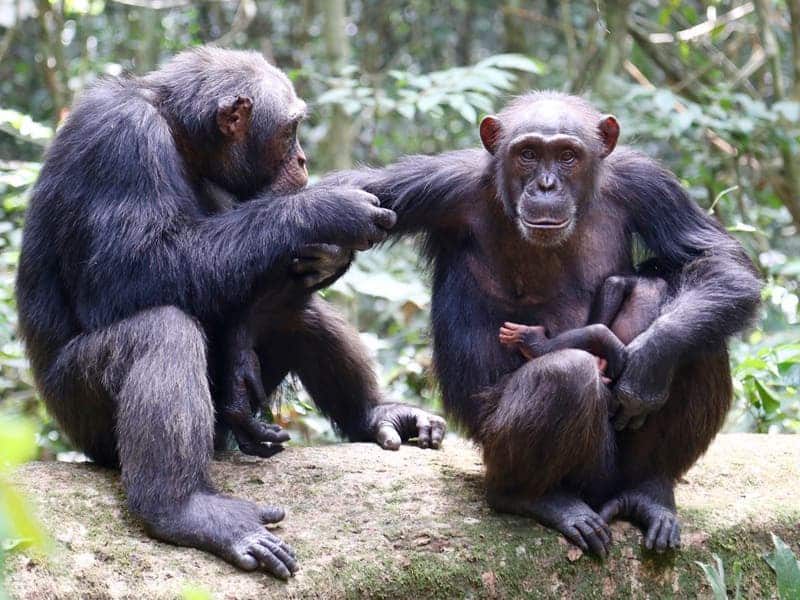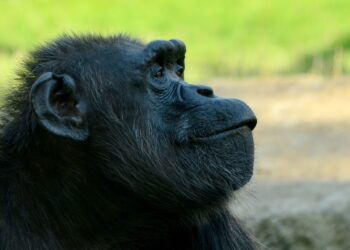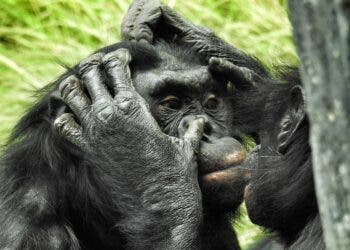
A somewhat benign bacteria related to the species that causes anthrax is now causing an alternative form of the disease in Africa. This new form of anthrax is different from the original on a couple of levels. For instance, it now not only strikes mainly hoofed mammals but also other animals. Chimps seem to be particularly vulnerable. Some 40 percent of all chimp deaths in Côte d’Ivoire’s Taï National Park can be attributed to the new anthrax and, if left unchecked, the chimp population there could be wiped out within 150 years.
“To our surprise, almost 40 percent of all animal deaths in Taï National Park we investigated were attributable to anthrax,” said virologist Emmanuel Couacy-Hymann from the Ivorian Animal Health Institute in a statement.
A worrying death toll
Fabien Leendertz of the Robert Koch Institute in Germany has been visiting the Taï National Park (TNP) for the past 16 years. The first time he and colleagues went there, they were surprised by the number of carcasses they could find. As the deaths piled up, the researchers decided to investigate. Since 2004, they took samples from 204 animal carcasses, and the bones of 75. They also tested 1,634 carrion flies in 2008, which are known to carry diseases.
Scientists knew there’s an alternative anthrax-causing bacteria for more than a decade. What Leendertz’s team was after were new clues that might tell them more about its effects on wildlife.
Anthrax is caused by Bacillus anthracis, a germ that lives in soil. When it spreads to animals, the bacteria causes infection in the skin, lung, and intestines. As such, the disease which has a kill rate of up to 85% can spread through cuts or open sores on the skin, by inhaling bacterial spores or after eating infected meat.
The bacteria infects animals such as cattle, sheep, and goats (ungulates, in general) more often than people. B. anthracis is also far more prevalent during certain seasons. But that doesn’t mean it’s not dangerous.
Many people know about it from the 2001 bioterror attacks when someone purposely spread anthrax through the U.S. mail. This killed five people and made 22 sick.
A hybrid killer
Scientists have known for more than a decade that there is another bacteria that’s causing identical anthrax disease symptoms.
B. anthracis has a cousin called B. cereus that also lives in the soil and food. It’s generally harmless, although some strains have been linked to food poisoning. One strain, however, seems to have come in contact with the virulence plasmids from B. anthracis resulting in an alternative anthrax bacteria called B. cereus bioar anthracis or Bcbva for short.
Data from the samples, some as old as 28 years, suggest Bcbva is present in 40 percent of carcasses, 35 percent of bones, and five percent of 1,089 fly samples that were collected to gauge disease prevalence.
The sampling and genetic screening suggest that Bcbva is already widespread, showing up in samples from 5 of 11 locations included in the study published in Nature. Moreover, unlike B. anthracis, Bcbva seems to be present all the time, not just in seasonal outbursts. This is very worrying because it means anthrax could cause havoc among populations in tropical rainforest environment, not just those found in arid conditions as was the norm.
Another notable distinction is that Bcbva seems to hit a wider variety of animals, not just ungulates. Some of the mammal species known to be infected by Bcbva include chimps, porcupines, six different monkey species, as well as a type of antelope called duikers.
Chimps are particularly hard hit by Bcbva, with 31 of the 55 sampled individuals having died from anthrax. Researchers from the Max-Planck Institute for Evolutionary Anthropology in Germany, who were among the international team of collaborators involved in this study, say that the data indicates chimps in the Taï National Park could be driven extinct.
There are so far no reported deaths from Bcbva infections in humans. However, reliable autopsy data is rare to find in this part of Africa, so this might be due to under-reporting. The strain could also mutate to infect humans at some point, which is why everyone is taking things very seriously. As for the chimps, the scientists are now investigating a possible vaccine solution.





